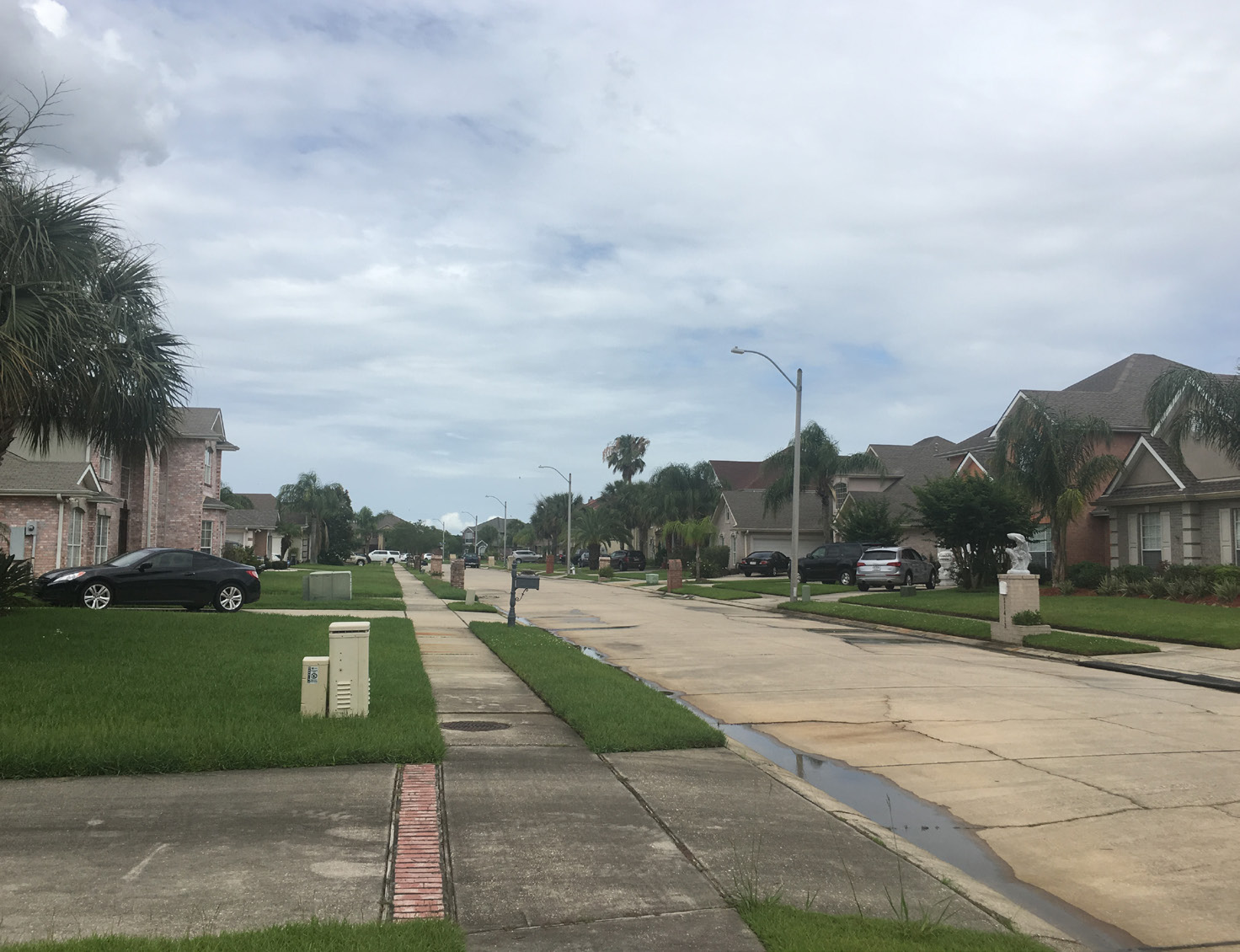Some would say that the East is a place where most of the crime in New Orleans happens. Others would call the East a place where family and close friends live. To Denise Fletcher, this is what the East means to her. She would ride the bus out to the New Orleans East in the 80’s to the mall on Lakeforest.
Denise: I thought maybe one day I could live in one of these nice houses. The first time we lived in the East… Kayla was about two, and Kristin was about seven. My husband traveled a lot for work. He was in California at the time. I was at work downtown, and I got a phone call from the police or my aunt. They called to tell me that someone broke into my house. I had went home, and they had kicked in the front door. The alarm wasn’t monitored. It only rang, so it scared them off. They didn’t steal anything, but that just scared me so bad because somebody was watching, and they knew my husband was gone. They knew I was home alone with two small children. I was terrified. I called my husband up and told him what happened. Soon as we got the door fixed, I called the real estate agent and put the house on sale.
We moved to Slidell where I felt safe and happy. I remember saying, ‘I will never ever move back to New Orleans.’ I planned on living the rest of my life in Slidell. We ended up staying there for five years because the commuting back to New Orleans for work and everything just took a toll on me. So, we started looking again. Of course, we looked in New Orleans East, and we saw this wonderful, beautiful neighborhood. McKendall Estates.”
Alan McKendall, the contractor, was a successful black builder in New Orleans East. However, McKendall Estates was ‘his most precious’ subdivision. The streets in McKendall Estates were named after his mother, father, and other family members. However, Allen McKendall is currently living in Austin, Texas, but he still visits New Orleans and keeps in touch with the people who’s houses he built.
We saw all of these successful, educated black people living in these beautiful homes and living this wonderful life. This neighborhood was for black, educated people who had nice jobs, and they were hardworking. Anywhere from attorneys and doctors to postman. Just anyone who worked really hard and wanted good things for their family. It just felt so right. So, we started planning to build a house here, design the house, and had Mr. McKendall build it. We sold the house in Slidell, and we moved in McKendall Estates. It was like a movie. It was perfect until Katrina.
I was so happy to have my children in this wonderful neighborhood. I made sure to put my children in a situation where they wouldn’t have to defend themselves from colorism. They didn’t experience it in their neighborhood, in their school… I didn’t want them experiencing what I went through.
Denise said that McKendall Estates was an ideal neighborhood to raise her family in because everyone would be comfortable in the neighborhood, and she wanted her children to have long-lasting friendships with the other children in the neighborhood.
Denise: I wanted to give my children a much better life than I had. It was like a dream come true. I still like my house because I designed it. It was custom-built.
Now, the home feels empty and quiet. Neighbors and friends didn’t move back after Hurricane Katrina, family members passed away, and some moved out of the house. This house isn’t what it used to be, neither is this neighborhood. The neighbors are more private.
The Plaza (mall), or the Grand (movie theater) never reopened. Six Flags, formally known as Jazzland, is still vacantly standing. Abandoned. It’s as though the East was left behind when the storm hit. However, there are a few things that did return after the storm. Walmart recently opened a couple of years ago, and there’s also a hospital.
But something is still missing.

McKendall Estates in New Orleans East. Photograph by Kayla Fletcher.
 NOLAbeings
Multimedia artist Claire Bangser created NOLAbeings as a portrait-based story project that marries...
NOLAbeings
Multimedia artist Claire Bangser created NOLAbeings as a portrait-based story project that marries...
 Data corner: Adobe Suite (create a PDF, social media graphic, presentation, edit a photo and video
Data corner is where you go to work with analytics and top tech skills. It takes on everything from PERL and SQL to Canva and Sprout Social.
Data corner: Adobe Suite (create a PDF, social media graphic, presentation, edit a photo and video
Data corner is where you go to work with analytics and top tech skills. It takes on everything from PERL and SQL to Canva and Sprout Social.
